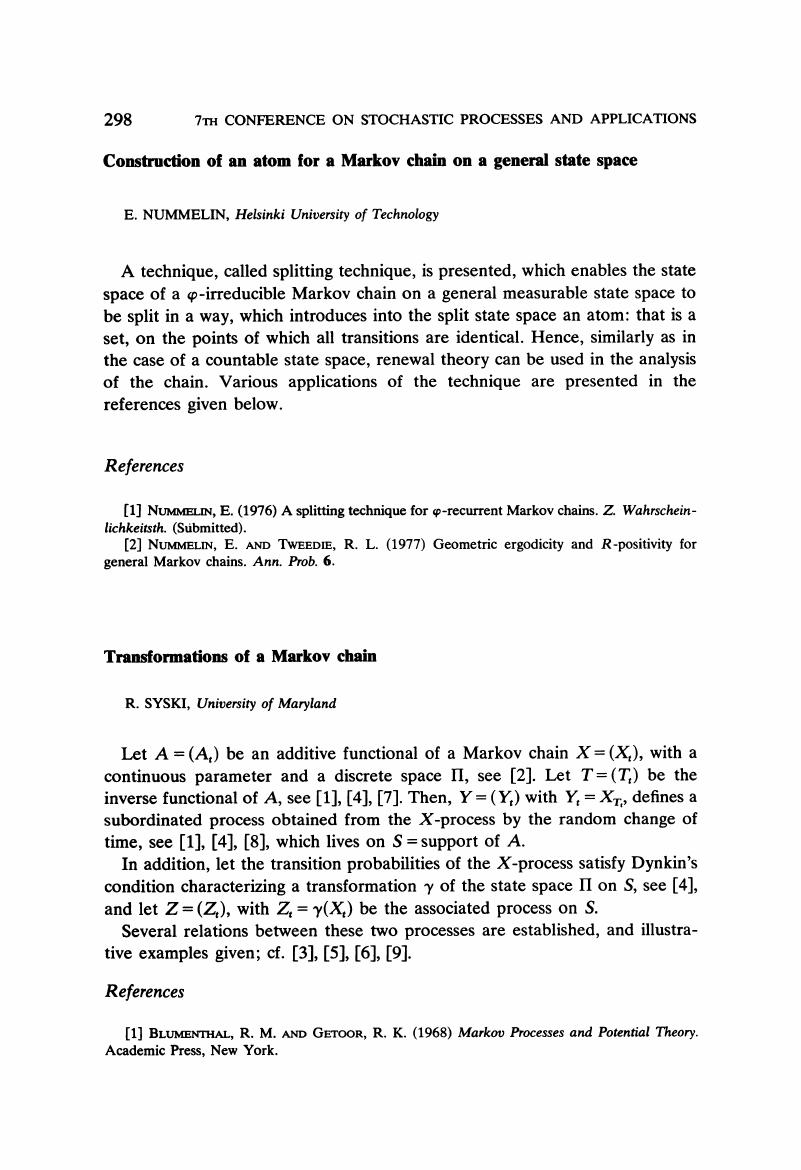No CrossRef data available.
Article contents
Transformations of a Markov chain
Published online by Cambridge University Press: 01 July 2016
Abstract
An abstract is not available for this content so a preview has been provided. Please use the Get access link above for information on how to access this content.

- Type
- II. Contributed Papers
- Information
- Copyright
- Copyright © Applied Probability Trust 1978
References
[1]
Blumenthal, R. M. and Getoor, R. K. (1968) Markov Processes and Potential Theory.
Academic Press, New York.Google Scholar
[2]
Chung, K. L. (1967) Markov Chains with Stationary Transition Probabilities.
Springer-Verlag, Berlin.Google Scholar
[3]
Cohen, J. W. (1962) Derived Markov chains. Nederl. Akad. Wetensch. Proc. Ser. A
65, 55–92.Google Scholar
[5]
Feller, W. (1966) An Introduction to Probability Theory and its Applications, Vol. 2. Wiley, New York.Google Scholar
[6]
Kingman, J. F. C. (1963) Poisson counts for random sequences of events. Ann. Math. Statist.
34, 1217–1232.Google Scholar
[8]
Rolin, J. M. (1975) The inverse of a continuous additive functional. Pacific J. Math.
58, 585–604.Google Scholar




